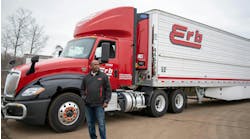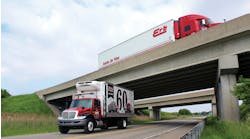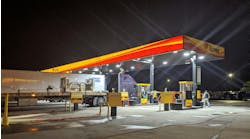A quarterly survey conducted by PricewaterhouseCoopers (PwC) indicates a new trend developing in recent global merger and acquisition (M&A) activity in the transportation and logistics [T&L] industry. More businesses are seeking to invest in what’s considered more “stable” areas of the world, namely mature markets such as North America.
“In the past, what we’ve seen is that the higher the economic growth potential in certain parts of the world – say China or India – would translate into higher deal valuation,” Kenneth Evans, U.S. transportation and logistics leader for PwC, told Fleet Owner.
“Now in this quarter we’ve seen for the first time that the valuation of such deals are equal whether [they are] located in more developed economies or in emerging markets,” he explained. “In particular, we see more M&A activity coming to the U.S. because investors in the [T&L] sector see more safety and stability compared to other regions in the world.”
Evans noted that the pace of deal activity in the T&L industry slowed slightly in the third quarter this year, primarily driven by less activity in emerging markets, but that PwC remained “more than a little surprised” at the pace of deal making in the face of growing uncertainty over global economic performance.
For T&L deals worth $50 million or more, there were 39 announced transactions totaling $11.3 billion in the third quarter, a decrease when compared to the 46 deals worth $13.4 billion in the second quarter this year. Despite that decrease, however, average deal value increased to $290 million in the third quarter, up from $272 million in the first three quarters of 2011.
“T&L deal activity was resilient in the third quarter despite concerns over macroeconomic trends that included fears over European debt, the potential for a double dip recession in the U.S., and fewer deals in the emerging markets,” Evans said. “With significant macroeconomic issues still persisting as we move into the fourth quarter, it’s unlikely we will see activity pick up in a sustained manner until some of the uncertainties are taken out of the market.”
A decrease in emerging markets activity, including inbound BRIC [Brazil-Russia-India-China] and non-BRIC transactions, has been the primary driver of the M&A slowdown in the third quarter, according to PwC, as both acquirers and targets in emerging markets each accounted for approximately 31% of volume for deals over $50 million, compared to 41% and 43% respectively in all of 2010.
Also, deal activity is shifting toward shipping and logistics modes and away from passenger targets in 2011, PwC’s survey indicated. In the third quarter, three of the four mega deals were shipping and logistic transactions with a total value of $3.8 billion.
However, PwC expects to see deal activity in the passenger air and ground sectors due to the anticipation of airport privatizations and road concessions which will be triggered by investor’s renewed interest in infrastructures deals.
“Deal activity in the U.S. and Europe has weathered the economic uncertainty well compared to the emerging markets,” noted Klaus-Dieter Ruske, global transportation and logistics leader for PwC. “What we’re seeing is a more conservative investment stance on the part of foreign strategic acquirers. Acquirers are taking their time, looking at opportunities in emerging markets, and taking a more intense approach to their due diligence, especially considering the high valuations and uneasiness regarding concerns over slowing growth in these regions.”
Ruske also noted the broad shift towards valuation “equalization” in T&L deals as well.
“Interestingly, there was virtually no difference in median value-to-EBITDA [earnings before interest, taxes, depreciation and amortization] ratios between emerging markets and advanced economies during 2011,” he pointed out. “This appears to indicate that overall, investors have judged the balance of risk and return opportunities of targets in these markets to be approximately equal so far this year.”



